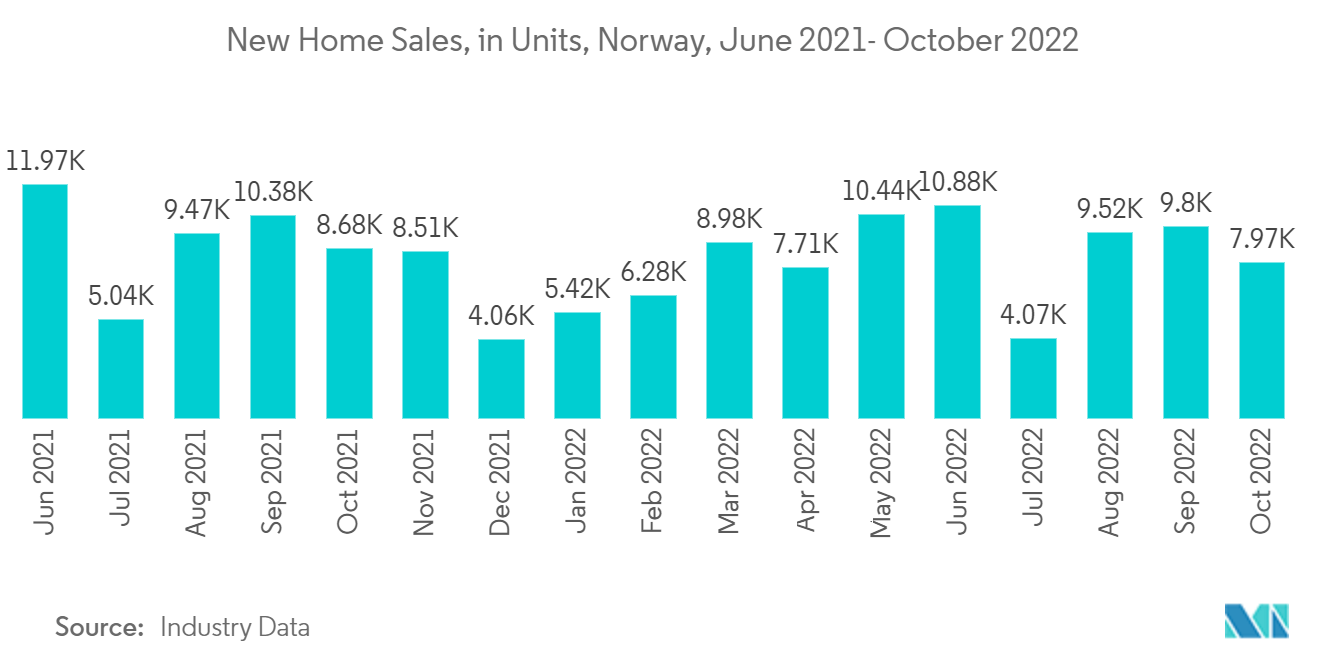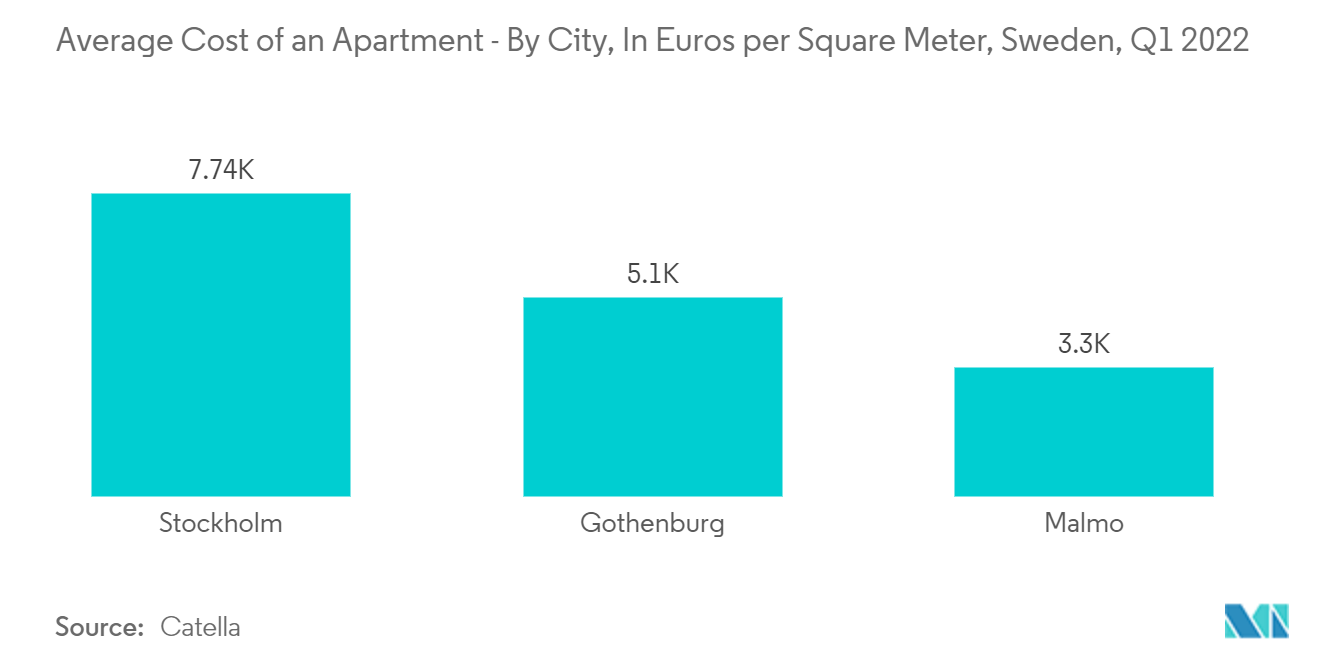Market Trends of Residential Real Estate Industry in Scandinavian Countries
This section covers the major market trends shaping the Scandinavian Countries' Residential Real Estate Market according to our research experts:
Growing Housing Market in Norway to Drive the Market
Norway's housing market is making a return after a poor performance in 2020. According to Statistics Norway, the first three quarters of 2021 saw a 3.6% increase from the previous year. In the first half of 2022, residential property sales in Norway fell by 8.9% to 41,275 units from a year earlier, in contrast to y-o-y increases of 6.8% in 2021 and 3.6% in 2020, according to Statistics Norway. Construction activity remains weak. In 2021, dwelling stats rose by a minuscule 0.7% y-o-y to 30,126 units while completions dropped 2.6% to 28,398 units.
In 2022, house prices in Norway have been turbulent, with some months showing a rise and others a dip. According to the statistics, the average price for a home in Norway was NOK 4,535,711 (USD 430,570) at the end of September 2022. House prices in Norway are easing due to interest rate hikes implemented by the nation's central bank since September 2021. Property owners and first-time home buyers have been hit by a double whammy of high inflation and rising interest rates. The latest rate hike implemented in November 2022 took rates to 2.5% in Norway - a sharp rise from a record low of 0% present just over a year ago.

Increase in Demand for Apartments
In the first half of 2022, 8,644 owner-occupied apartments were sold in Denmark, down a third from 2021's tally of 12,947 flats sold by that time. The figure is also slightly down on the number of apartments sold during the first halves of 2019 and 2020. The last year which saw fewer apartments sold during its first six months was 2014. In contrast to the villas and summer houses, fewer newly built owner-occupied apartments were completed in 2021 compared to the previous year. There were 13,520 completed apartments, with a total of 15,386 new ones added in 2020.
In Veidekke has been commissioned by Nesgata 19 utvikling AS (a joint venture by OBOS Nye Hjem and Otto Olsen Boligutvikling) to build the second tranche of housing in the Kvarteret residential project in the town of Lillestrom. The commission is a design and builds contract worth NOK 248 million (USD 23.9 Million) excluding VAT and will entail the construction of 84 eco-certified apartments and an underground car park.
Skanska has divested a multi-family rental project with high climate ambitions in Stockholm, Sweden, for about SEK 580 Million (USD 54.6 Million). Skanska is developing the Tora project, next to Spanga commuter train station, in the emerging new Bromstensstaden. The block consists of 145 rental apartments, of which ten are LSS homes for people with special needs. The project has great focus on minimizing climate impact. Skanska's green concrete, which has a halved climate impact compared to regular concrete, as well as solar panels on the roofs are examples of measures that contribute to lower emissions.

